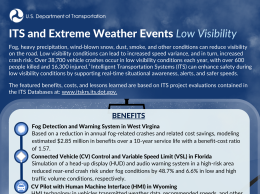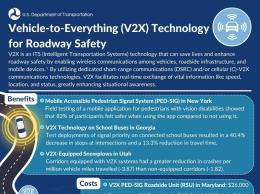Supporting Safe Intersection Crossing for Pedestrians with Disabilities
This case study discusses "Supporting Safe Intersection Crossing for Pedestrians with Disabilities." The project discussed in this case study was part of the Accessible Transportation Technologies Research Initiative (ATTRI) Program.
IN THIS CASE STUDY YOU WILL LEARN:
- Why the Accessible Transportation Technologies Research Initiative Program helped to fund technology research and development to support pedestrians with disabilities.
- How technology helps enable safe intersection crossing.
- How multiple field tests with the target user group informed technology improvement.
The ATTRI Program: An Introduction
| The National Highway Traffic Safety Administration (NHTSA) recorded 6,205 pedestrian deaths in 2019.7 According to the Centers for Disease Control and Prevention (CDC), per trip, pedestrians are 1.5 times more likely than passenger vehicle occupants to be killed in a car crash.8 |
People with disabilities often do not have equal access to transportation. To address this problem, the Accessible Transportation Technologies Research Initiative (ATTRI) Program—a joint US Department of Transportation effort between the Federal Highway Administration, Federal Transit Administration, and Intelligent Transportation Systems Joint Program Office—was designed to help improve access to transportation systems for people living with visual, hearing, cognitive, and mobility disabilities by developing and implementing a suite of new technologies.1 ATTRI funded four technology development areas: wayfinding and navigation, pre-trip concierge and virtualization, safe intersection crossing, and robotics and automation. This case study details the initial development and testing of a mobile application prototype to assist pedestrians with disabilities when crossing the street at signalized intersections.
| Problem | Crossing busy and/or unfamiliar intersections for pedestrians with disabilities poses a particularly challenging task. Despite their best efforts, the safety of a pedestrian with a disability often depends on the alertness and accommodation of the drivers of oncoming vehicles.2 Additionally, pedestrians with a mobility disability may not be able to cross the intersection within the pre-set time allocation.2 |
| Goal | Enable pedestrians to use their connected mobile devices to interface with vehicles, traffic signals, and other infrastructure to receive context-based information related to pedestrian and built environments—helping them cross an intersection safely.3 |
| Solution | In 2017, the USDOT granted a Broad Agency Agreement (BAA) award to Carnegie Mellon University to connect pedestrian travelers with disabilities to the traffic signal systems (and by extension to nearby connected vehicles and infrastructure) and develop assistive services for safe intersection crossing and increased independent mobility.3 |
Combining Technologies to Support Safe Intersection Crossing
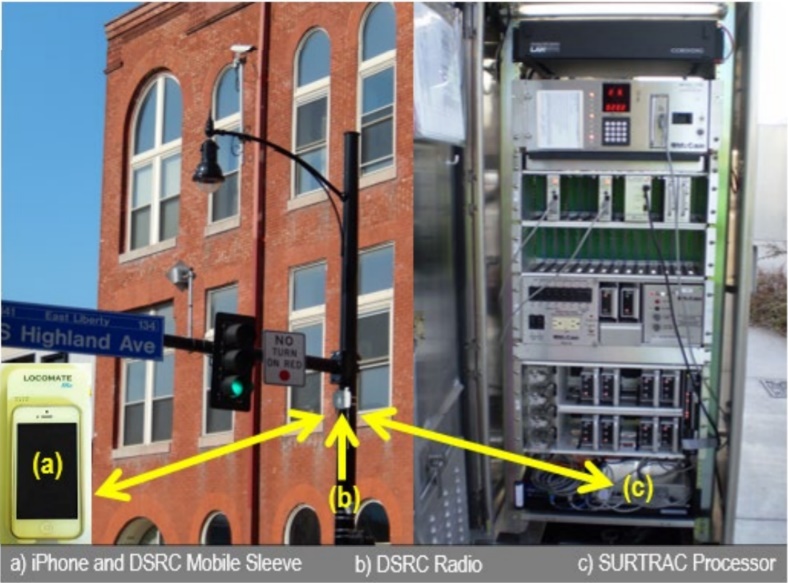
Transportation and mobility are key to quality of life, equity of opportunity, and economic well-being. Yet for travelers with disabilities, navigating city streets can present a significant challenge and may limit their ability to accomplish daily activities.2 Intersection crossing is a frequent challenge for many travelers with disabilities due to inaccessible design, short crossing phases, and distracted drivers.
To explore the potential of technology to address these challenges, the ATTRI Program funded the preliminary development and testing of PedPal, a prototype mobile application that enables pedestrians with disabilities to communicate directly with signalized intersections and actively influence traffic control decisions to facilitate their safe and efficient intersection crossing.2,4 The app can monitor pedestrian progress, and by utilizing the real-time adaptive traffic signal control system, can trigger dynamic extension of the crossing phase if necessary.4
PedPal takes advantage of recent advances in two Intelligent Transportation System (ITS) areas: (1) vehicle-to-infrastructure (V2I) communication and (2) real-time adaptive signal control.2 PedPal combines these emerging ITS technologies—V2I communication via dedicated short-range communication (DSRC) radios and the adaptive traffic signal control system known as SURTRAC—with the user’s mobile device to allow for a safer and more efficient intersection crossing experience for pedestrians with disabilities (Figure 1).2,4 This example points to the opportunity to find synergy across ITS technologies in improving the transportation system; investment in one ITS technology can enable others and provide greater and/or more widespread benefits to transportation system users.
Testing the App in the Field
As part of the prototyping process, the project team developed a test and evaluation plan focused on gathering quantitative and qualitative data from participants’ use of PedPal at multiple points during the project. The research team recruited 14 volunteers from the local disability community in Pittsburgh, of which the majority had vision impairments, to test PedPal on a handful of adaptive signal-controlled intersections (Figure 2).2
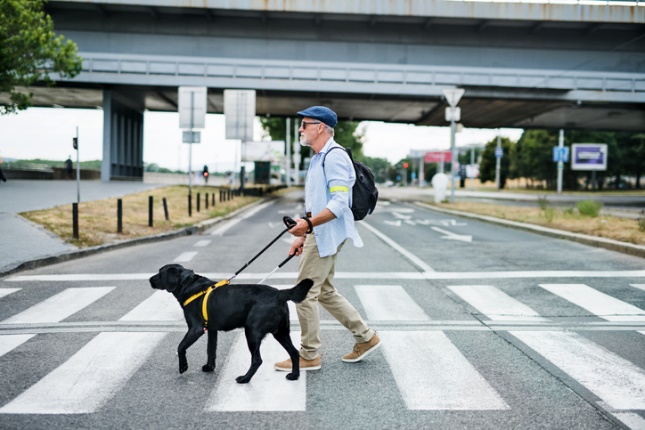
Before trying out the app in the field, participants completed a pre-test survey, which aimed to understand their intersection crossing tendencies to provide a baseline for assessing the impact of PedPal.5 In addition to taking the survey, participants were trained to use the app with a simple intersection traffic signal simulator.5
During field testing, the development team asked each participant to perform multiple crossing trials both with and without app assistance and recorded several measurements for each, including the amount of time the user waited upon arrival at the corner, the number of traffic signal cycles that the user waited through while preparing to cross, the eventual crossing duration, and any safety or technical interventions required. After the trials, participants were asked to complete a survey designed to get their qualitative assessment of the technology and suggestions for improvement.2,5
This information allowed the research team to understand the app’s key features, areas for enhancement, and impact on participant crossing. By establishing baselines for each participant without the app (control study) at each intersection, researchers were able to clearly understand the app’s impact. By performing similar field tests at both the beginning and end of the project, the research team could incorporate participant feedback into app improvements and measure those impacts.
Boosting User Safety, Efficiency, and ConfidenceOne participant observed, "I rely on my Seeing Eye dog to safely guide me across ... street crossings, and my Seeing Eye dog relies on me to confidently give the command to initiate a crossing. The PedPal app gives me the information I need to make an intelligent decision at a crossing, eliminating the need to interpret the cacophony of vehicular cues, often the lack of vehicular cues, and the occasional misinformation from fellow pedestrians."2 Another user commented that, for visually impaired pedestrians, knowing when to cross the street makes the PedPal app “worth its weight in gold.”5 |
Evaluating and Improving the App
Individuals who participated in the preliminary user test were asked what improvements they observed in the PedPal prototype by the end of the project.5 In comparison to the initial prototype, the enhanced prototype was found to be simpler and easier to use and much more robust with respect to system operations.5 Overall, the user response was positive and enthusiastic.5
| Use of PedPal resulted in an 8 percent decrease in total crossing time, defined as the duration from initial arrival at the corner to completion of the desired cross, for individuals with vision impairments.5 This decrease is directly due to a decrease in the probability of waiting through a complete traffic signal cycle (as is often recommended to get a sense of vehicle traffic flows in different directions), from 42 percent (when not using the app) to 23 percent (when using the app).5 |
Quantitatively, the research team found that the use of PedPal reduced both the total wait time and the number of cycles needed to cross for participants with vision impairments.2 Simultaneously, these participants actually moved across the intersection at a slower, more relaxed pace when using PedPal.2 Based on observations and post-trial discussions with participants, this change in pace appears to correlate to the confidence users feel when crossing the street with the app: they feel more assured that they are crossing at the correct phase and are less urgent in their movements as a result.2 All participants indicated that PedPal was a promising development so far.5
The ATTRI grant allowed for initial app development and testing. The field tests provided strong evidence of the viability of the PedPal mobile app concept for safe intersection crossing.5 In addition to evaluating the prototype technology’s ability to enable safe intersection crossing, which was a key project outcome, the broader ATTRI Evaluation Framework emphasizes the importance of understanding the effect of the project on overall trip making capabilities of users.11
ATTRI’s early investment in safe intersection crossing technology has led to further funding and technology advancements in support of these broader aims. Following the two-year ATTRI Program and given the positive response for the prototype, the project received additional funding from the USDOT-supported Mobility21 University Transportation Center to further develop and deploy PedPal for pedestrians with disabilities.6 In addition to refining the current prototype for practical application, the research team is exploring ways to best deploy the resulting technology so that it is free and accessible to the local disability community.5 This research and development effort has also contributed to broader efforts aimed at improving pedestrian safety through technology. For example, researchers in Cyprus and Norway have cited PedPal’s work in their research and development of a smartphone application designed to detect obstacles for pedestrian safety.9
Lessons Learned
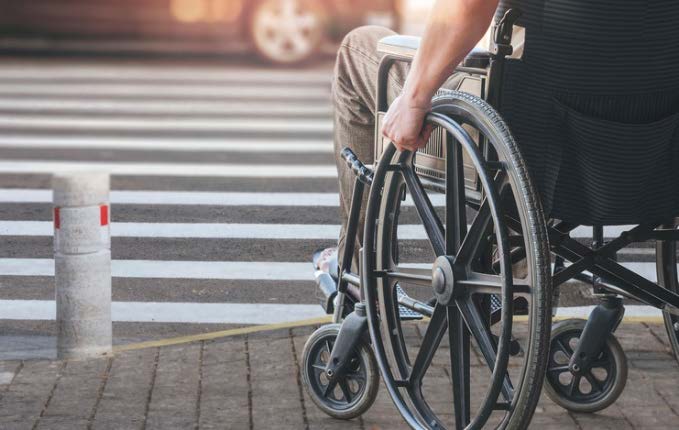
Source: iStock
Investment in one ITS technology can enable and/or improve others in the system.
Success of this project was, in part, enabled by existing ITS infrastructure and capabilities. Real-time adaptive signal systems designed for multimodal urban road networks were already in place at intersections where the research team conducted field tests.2,5 This allowed PedPal to realize enhanced capabilities, including the ability to dynamically extend the crossing phase duration, anticipate pedestrian arrivals, and influence real-time traffic control decisions. Additionally, connectivity based on V2I communication allowed the app to maximize accessibility to and use of real-time vehicle information.5
The application evolves as its supporting technologies mature.
Work is ongoing toward extending use of added ITS infrastructure to effectively monitor crossing progress and veering outside of the crosswalk.5 But, one of the biggest technical challenges for these capabilities is the lack of sufficient localization accuracy to help determine precise movements.5 As localization technologies, V2I communication, and other supporting technologies mature, this will help applications like PedPal to mature as well.
Engaging with target users is key to successful technology development and deployment.11
At multiple points during the research study, participants were asked which features they would (and as the project progressed, did) find most important in the safe intersection crossing app. Some of the most commonly mentioned top app features were indicating when it is safe and how much time remains to cross.5 By engaging the target audience throughout the development process, the development team was able to build and enhance the app according to user feedback (Figure 3). For example, user feedback received early in the project led to the elimination of the app’s history tab since users did not indicate strong interest in this feature and instead preferred a simpler overall user interface.5 In the end, this led to a better product and user experience.
Pedestrian data and communication help optimize the multimodal system for all users.
Historically, signal phase and timing has frequently prioritized motor vehicle movement over pedestrian movement. For example, many intersections have a “shortened pedestrian phase” to facilitate vehicular right turns.10 This limited consideration for pedestrians is due, in part, to a signal’s limited situational awareness and availability of pedestrian data. If sensors can provide mode information (and in this case the PedPal app acts as a key pedestrian sensor), then real-time intersection scheduling procedures are capable of multimodal optimization.2 By communicating directly with infrastructure, pedestrians can enable the technology to learn new information, and therefore, better optimize its processes for the benefit of all roadway users.
References
- Smith, Stephen, et al. “Connecting Pedestrians with Disabilities to Adaptive Signal Control for Safe Intersection Crossing and Enhanced Mobility: 2019 Field Test and Evaluation Plan.” Washington, D.C.: US Department of Transportation Intelligent Transportation Systems (ITS) Joint Program Office, 2019. Publication Number: FHWA-JPO-19-753. https://rosap.ntl.bts.gov/view/dot/43615
- Vadakpat, Govind, et al. “Technology to Make Signalized Intersections Safer for Pedestrians with Disabilities,” Federal Highway Administration Research and Technology, last modified December 18, 2020,https://www.fhwa.dot.gov/publications/publicroads/21winter/03.cfm
- “Accessible Transportation Technologies Research Initiative (ATTRI): Safe Intersection Crossing,” US Department of Transportation Intelligent Transportation Systems Joint Program Office, Research Archive, Accessed June 2021. https://www.its.dot.gov/research_archives/attri/safe_crossing.htm
- Smith, Stephen, et al. “Connecting Pedestrians with Disabilities to Adaptive Signal Control for Safe Intersection Crossing and Enhanced Mobility: System Design Document (SDD).” Washington, D.C.: US Department of Transportation Intelligent Transportation Systems (ITS) Joint Program Office, 2018. Publication Number: FHWA-JPO-18-685. https://rosap.ntl.bts.gov/view/dot/39010
- Smith, Stephen, et al. “Connecting Pedestrians with Disabilities to Adaptive Signal Control for Safe Intersection Crossing and Enhanced Mobility: Final Report.” Washington, D.C.: US Department of Transportation Intelligent Transportation Systems (ITS) Joint Program Office, 2019. Publication Number: FHWA-JPO-19-754.https://rosap.ntl.bts.gov/view/dot/50548
- “#333 Safe Intersection Crossing for Pedestrians with Disabilities,” Carnegie Institute of Technology at Carnegie Mellon University, Accessed June 2021. https://ppms.cit.cmu.edu/projects/detail/333
- “Pedestrian Safety,” National Highway Traffic Safety Administration, Accessed July 2021.https://www.nhtsa.gov/road-safety/pedestrian-safety
- “Pedestrian Safety,” Centers for Disease Control and Prevention, National Center for Injury Prevention and Control, Accessed July 2021. https://www.cdc.gov/transportationsafety/pedestrian_safety/index.html
- G. Papageorgiou, K. Hadjigeorgiou and A. N. Ness, "Exploring the Prospects of Developing a Smartphone Application for Pedestrians," Institute of Electrical and Electronics Engineers (IEEE), 2020 19th International Symposium INFOTEH-JAHORINA (INFOTEH), 2020, pp. 1-5, doi: 10.1109/INFOTEH48170.2020.90662871
- “Pedestrian Accommodations at Intersections.” From the Federal Highway Administration (FHWA) Course on Bicycle and Pedestrian Transportation, Last Updated February 2013.https://safety.fhwa.dot.gov/PED_BIKE/univcourse/swless15.cfm
- Caspi, Anat, Mark Hallenbeck, and Shannon Tyman. “Accessible Transportation Technologies Research Initiative(ATTRI) Performance Metrics and Evaluation: Evaluation Framework Report.” Washington, D.C.: US Department of Transportation ITS Joint Program Office, July 2020. Publication Number: FHWA-JPO-20-784.https://rosap.ntl.bts.gov/view/dot/50748
